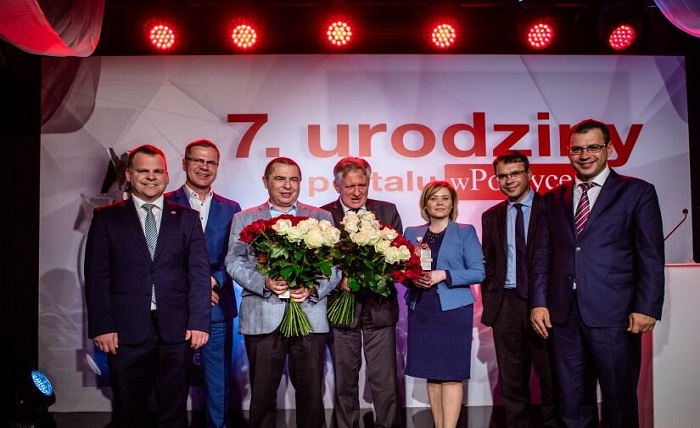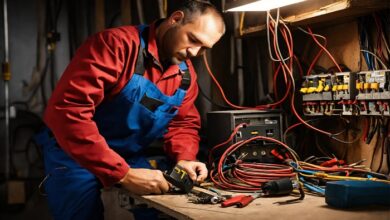Understanding WPolityce: A Comprehensive Guide to Polish Politics

In the realm of Polish politics, the term “WPolityce” holds a significant place. This comprehensive guide will delve into the multifaceted world of Polish politics, shedding light on its history, major political parties, electoral system, and the current issues shaping the nation’s political landscape. So, let’s embark on this journey to understand ‘WPolityce’ better.
The Historical Perspective
To comprehend the contemporary Polish political landscape, it’s crucial to examine its historical roots. ‘WPolityce,’ which translates to “In Politics” in English, symbolizes the nation’s enduring commitment to democratic governance. Poland’s political history is replete with ups and downs, marked by its transition from communism to a vibrant democracy in the late 20th century.
From Communism to Democracy: During the late 1980s, Poland experienced a monumental shift from a communist regime to a democratic one. This transformation, often referred to as the “Solidarity Revolution,” was a watershed moment in ‘WPolityce.’ The Solidarity movement, led by figures like Lech Wałęsa, played a pivotal role in shaping modern Polish politics.
Polish Political Parties
Poland’s political landscape is characterized by a diverse array of political parties, each with its own ideology and vision for the country. These parties are central to ‘WPolityce,’ influencing legislative decisions, policy-making, and the overall direction of the nation.
Law and Justice (PiS): One of the most prominent political parties in Poland is Law and Justice, abbreviated as PiS (Prawo i Sprawiedliwość). PiS is a right-wing party that has held power in Poland since 2015. It advocates for conservative values, national sovereignty, and social conservatism, making it a significant player in ‘WPolityce.’
Civic Platform (PO): Civic Platform, or PO (Platforma Obywatelska), is a center-right political party known for its pro-European Union stance. It has been a major player in Polish politics and is seen as a counterweight to PiS. Understanding the dynamics between PiS and PO is essential in deciphering ‘WPolityce.’
The Electoral System
Poland’s electoral system is another crucial aspect of ‘WPolityce.’ The country employs a mixed electoral system, which combines elements of both proportional representation and first-past-the-post voting.
Sejm and Senate: The Polish parliament, known as the Sejm and Senate, is bicameral. The Sejm is the lower house and is composed of 460 members elected through proportional representation, while the Senate consists of 100 senators elected in single-member constituencies.
Presidential Elections: In ‘WPolityce,’ presidential elections are of great significance. The President of Poland is elected through a direct popular vote for a five-year term. This position holds substantial executive powers and plays a critical role in shaping the nation’s policies and international relations.
Current Issues in ‘WPolityce’
To truly understand the nuances of Polish politics, it’s essential to stay updated on the current issues that dominate the political discourse. Here are some of the key topics currently shaping ‘WPolityce.’
Judicial Reforms: One of the most contentious issues in recent years has been the Polish government’s judicial reforms. Critics argue that these reforms threaten the independence of the judiciary and undermine the rule of law. This issue has drawn significant attention both within Poland and from the European Union.
European Union Relations: Poland’s relationship with the European Union is a central concern in ‘WPolityce.’ Tensions have arisen over issues like the rule of law, with the EU expressing concerns about the direction of Poland’s democracy. Navigating this relationship is crucial for understanding the nation’s political dynamics.
Social Issues: Social issues, including LGBTQ+ rights and abortion, have been subjects of heated debate in Polish politics. The government’s stance on these matters and the resulting protests and activism have brought social issues to the forefront of ‘WPolityce.’
The Role of Media in ‘WPolityce’
Media plays a significant role in shaping public opinion and political discourse in Poland. Understanding how media operates within ‘WPolityce’ is vital for comprehending the flow of information and the influence it has on political decisions.
Media Landscape: Poland has a diverse media landscape that includes both state-owned and private media outlets. Understanding the ownership and editorial stances of various media organizations is essential for interpreting the news and analysis that shape ‘WPolityce.’
Freedom of the Press: The concept of press freedom is central to ‘WPolityce.’ Recent concerns have been raised about media independence, and Poland’s ranking on the World Press Freedom Index has been closely monitored. This issue intersects with broader debates about democracy and civil liberties.
The Future of ‘WPolityce’
As we contemplate the future of ‘WPolityce,’ it’s clear that Polish politics will continue to evolve and adapt to both domestic and international pressures. The nation’s role in the European Union, the balance of power between political parties, and the resolution of contentious issues like judicial reforms will shape the trajectory of ‘WPolityce.’
conclusion:
‘WPolityce’ is not merely a term; it represents the dynamic and ever-changing world of Polish politics. From its historical roots to the current issues and media landscape, every aspect of ‘WPolityce’ contributes to the nation’s political identity. By understanding these elements, we can better appreciate the complexities and challenges facing Poland as it navigates its political future.
This comprehensive guide has explored the historical perspective, major political parties, electoral system, current issues, the role of media, and the future of ‘WPolityce.’ Armed with this knowledge, you are better equipped to engage in discussions about Polish politics and gain deeper insights into this fascinating aspect of the nation’s identity.




